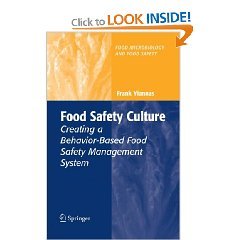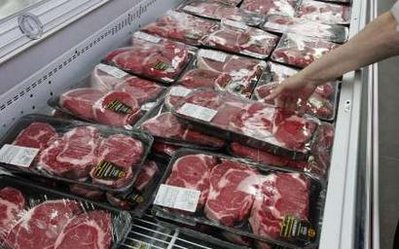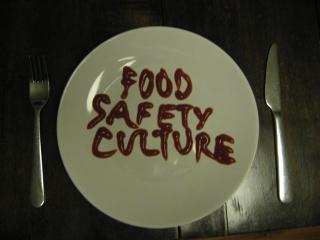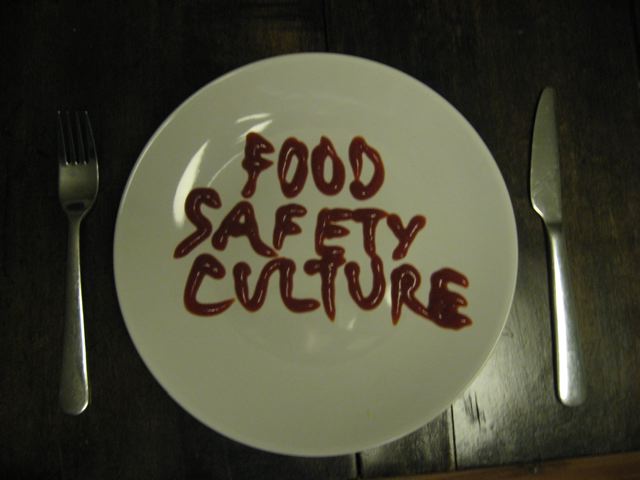Rich Stytzer, state board member and immediate past president of the Westchester/Rockland Chapter of the New York Restaurant Association and vice president of Antun’s of Westchester Catering in Elmsford made the following points in .png) Westfair Online. My comments follow.
Westfair Online. My comments follow.
“The New York State Restaurant Association (NYSRA) and its members believe food safety is of the utmost importance and take steps every day to educate members and workers about proper food handling techniques. NYSRA holds ServSafe training classes throughout the state to educate members, offers products and materials to train employees and has even lobbied in favor of mandatory foodhandler certifications to better protect its members, the industry and the customers.”
ServSafe is nice but does it really work? Is it as effective as those signs that say, ‘Employees Must Wash Hands?’ And if the industry wanted mandatory foodhandler certifications, it would already exist – for everyone, not just a manager.
“NYSRA’s concerns about this letter-grading legislation lie with the assumption that letter grades are associated with improved compliance by restaurants and will lead to a decline in foodborne illness.”
Those assumptions are full of holes. That’s why I argue restaurant inspection disclosure is really about improving the microbial food safety culture and awareness among patrons and staff. Citizens also have a right to information collected through the tax dollars.
“NYSRA believes educating operators, rather than fining or publicly humiliating them, is a better course of action.”
How, where and when will this ‘better education’ happen?
“The idea of using letter grades for restaurant inspections is not widely accepted as a means to improve cleanliness or as an inspection method at all. In 1993, the Food and .jpg) Drug Administration removed scoring from the model food code citing problems with the system.”
Drug Administration removed scoring from the model food code citing problems with the system.”
No one said letter grades is an inspection method, and if they did, they were wrong. Grades are a tool to promote food safety issues and awareness.
“As recently as 2008, the FDA was asking for research to evaluate and assess scoring methodologies. The national trend among the majority of public health professionals generally has been to avoid the use of scores or grades, which are considered to be misleading and inaccurate.”
We’ve been doing the research. Got a reference for that statement about the majority of public health types, or are you just speaking on their behalf?
“In a 2004 study published by the Centers for Disease Control and Prevention, it was concluded after studying more than 167,000 restaurant inspection reports, that there was no difference in average letter grades given to restaurants experiencing outbreaks compared to those that were not.”
Like any study, there were limitations. Restaurant inspection disclosure is about enhancing the food safety conversation throughout the public and with food service staff. Our own research (in press) has found embarrassment to be a powerful .jpg) motivator among restaurant managers.
motivator among restaurant managers.
For those still wondering, here’s a review paper discussing the pros and cons of disclosure systems.
Filion, K. and Powell, D.A. 2009. The use of restaurant inspection disclosure systems as a means of communicating food safety information. Journal of Foodservice 20: 287-297.
Abstract??The World Health Organization estimates that up to 30% of individuals in developed countries become ill from food or water each year. Up to 70% of these illnesses are estimated to be linked to food prepared at foodservice establishments. Consumer confidence in the safety of food prepared in restaurants is fragile, varying significantly from year to year, with many consumers attributing foodborne illness to foodservice. One of the key drivers of restaurant choice is consumer perception of the hygiene of a restaurant. Restaurant hygiene information is something consumers desire, and when available, may use to make dining decisions.

 sure this does not happen again."
sure this does not happen again.".jpg) characterizations. These changes were often the result of efforts to revive interest in a show whose audience had begun to decline, usually through the employment of different actors, writers or producers.
characterizations. These changes were often the result of efforts to revive interest in a show whose audience had begun to decline, usually through the employment of different actors, writers or producers.
 whether it’s live webcams in the facility or real-time test results on the website — to help restore the shattered trust with the buying public.
whether it’s live webcams in the facility or real-time test results on the website — to help restore the shattered trust with the buying public..jpg) same — immediately correcting a bad habit will have a positive affect on establishments, scores, and the community in which they serve.
same — immediately correcting a bad habit will have a positive affect on establishments, scores, and the community in which they serve. “The strength of a culture is best defined in terms of the homogeneity and stability of group membership and the length and intensity of shared experience (Tompkins, 2005, pg. 365).”
“The strength of a culture is best defined in terms of the homogeneity and stability of group membership and the length and intensity of shared experience (Tompkins, 2005, pg. 365).” on an active lifestyle,” advocating outdoor activities such as hiking and mountain biking.
on an active lifestyle,” advocating outdoor activities such as hiking and mountain biking. based on personal preference and lifestyle choices. Cool. But there are some microbiological basics that food safety types have to pay attention too.
based on personal preference and lifestyle choices. Cool. But there are some microbiological basics that food safety types have to pay attention too. The new program requires Walmart and Sam’s Club beef suppliers to implement controls that would significantly reduce potential contamination levels and validate that the measures they’ve implemented are effective through specialized testing.
The new program requires Walmart and Sam’s Club beef suppliers to implement controls that would significantly reduce potential contamination levels and validate that the measures they’ve implemented are effective through specialized testing. We never plan these things because we’re both busy – Jorge in his crisp, tailored suit, talking about all the meals
We never plan these things because we’re both busy – Jorge in his crisp, tailored suit, talking about all the meals 
 Pied-Noirs, the former French inhabitants of Algeria, at her undergraduate alma mater, Truman University in Kirksville, Missouri, where she was feted Monday night.)
Pied-Noirs, the former French inhabitants of Algeria, at her undergraduate alma mater, Truman University in Kirksville, Missouri, where she was feted Monday night.) • Although no two great food safety cultures will be identical, they are likely to
• Although no two great food safety cultures will be identical, they are likely to Or as Mansour Samadpour of Seattle says,??
Or as Mansour Samadpour of Seattle says,??